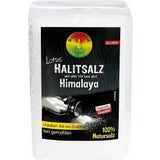The Effects of Taste in Ayurveda
There are innumerable foods in the world and each one of them has its own specific, unique taste. However, we often use the same words to describe different flavours. This is not least due to our ability to perceive only a limited number of different tastes with the tongue. Ayurvedic teaching uses this apparent disadvantage to enable people to consume a wider variety of foods that suit their own constitution and have a particularly positive effect.
For this reason, the taste of food plays a very special role in Ayurveda. For example, if you have a lot of pitta, it is better to avoid spicy foods because they have a strong invigorating effect. Instead, one should eat cooling foods that are often bitter.
According to Ayurveda there are a total of six flavours, i.e. more than we know today in the western world. In addition to the classics sweet, sour, salty and bitter, Ayurveda also considers spicy (pungent) and astringent, as tastes. Let's take a closer look:
Sweet
Sweet promotes the growth of body tissue, it nourishes, invigorates, satisfies and is said to contribute to longevity. In addition, the nerves are nourished and the effects of toxins are weakened. However, too much sweet can lead to obesity, sluggishness, laziness, and excessive sleep. The digestive fire is also negatively affected, breathing becomes difficult and phlegm increases in the body. Especially people with a Kapha constitution have to be very careful with sweets.
Sour
This taste stimulates the metabolism, invigorates, gives lightness and creativity. In addition, the appetite is stimulated, flatulence is reduced and sour food is said to give satisfaction. Too much sour food, however, can lead to an accumulation of ama, i.e. toxins, and its heating effect is said to promote inflammation. Those who consume too much food with a sour taste are often irritable, anxious and panicky.
Salty
Salt is the basic seasoning in the kitchen. Salty foods reduce Vata, promote digestion because they strengthen Agni. In Ayurveda it is sharp, fluid, biting, cutting and is said to make the limbs supple. Its effect is said to calm and open, reduce stiffness, relax and provide security. In addition, salty foods is said to clean the blood vessels and soften accumulations, making them easier to remove. Too much salt can worsen infectious skin diseases, cause sluggishness, numbness, heaviness and is even said to lead to wrinkled skin, erectile dysfunction and hair loss.
Bitter
Bitter taste restores the sense of taste, has a detoxifying and antibacterial effect and aids digestion. It is said to relieve an itching or burning sensation, as well as inflammatory diseases and thirst. According to Ayurveda, it is also said to help reduce fat, purify the blood, and remove toxins. Bitter makes you feel light, creative and spontaneous. But too much makes you tired, dizzy and can cause insecurity and fear.
Spicy
Spiciness cleanses food and the mouth, promotes Agni, the secretions of the nasal mucous membrane and should give us clarity, drive and willpower. Spicy food makes you euphoric, is supposed to eliminate water retention and fat in the body as well as congestion and even has a germicidal effect. While spiciness stimulates, too much can make you aggressive and angry, but also sluggish and tired. The Ayurvedic definition of spicy includes more than the taste we get from chillis. Foods such as basil, mint, pepper, rosemary, sage, thyme or cinnamon are also considered spicy. In other words, spicy in Ayurveda includes spicy and aromatic.
Astringent
This flavour promotes spiritual opening and is said to bring more spiritual strength and sensitivity. In addition, an astringent taste is said to reduce perspiration and have a drying or cooling effect. According to Ayurveda, this taste should also promote the healing of inflamed areas and stop bleeding, i.e. everything that is supposed to heal by growing together. However, too much is said to have a negative effect on the psyche and can exacerbate mental illness. Examples of astringent tasting foods are raw cranberries or back tea that has been left to steep for too long.
Combine Tastes for the Best Effect
How do you use the knowledge of the different flavours to your advantage? It's best to make sure your meals contain all of the tastes. This ensures that dishes are not only delicious but are also balanced and easy to digest. A sweet and sour dressing with salt and pepper is perfect for a spicy and bitter rocket salad. As you can see, we have quickly and easily combined all six Ayurvedic tastes. This balances out the dry, rough and cold properties of the rocket. But that's just one example. The possibilities are endless - let your imagination run wild!
Latest reviews
-
 5.0 (1)
5.0 (1)Bioenergie LOTUS Fine Halite Salt, 1,000 g Cellophane Bag
-5%- Non-iodised & unrefined
- Additive-free
- Perfect for salt shakers
£4.56 £4.80 (£4.56 / kg)Delivery by January 09
-
 5.0 (6)
5.0 (6)Home of Ayurveda somamed Organic Yellow Mung Dal, Halved & Peeled, 450 g
Bestseller- Quickly prepared
- Suitable for Vata, Kapha & Pitta
- Versatile uses
£4.70 (£10.44 / kg)Delivery by January 09
Magazine Articles:
-
Great Britain: Free standard delivery from £69.90
-
Free
returns More than 5.550 products
Secure payments
with SSL encryption technology



